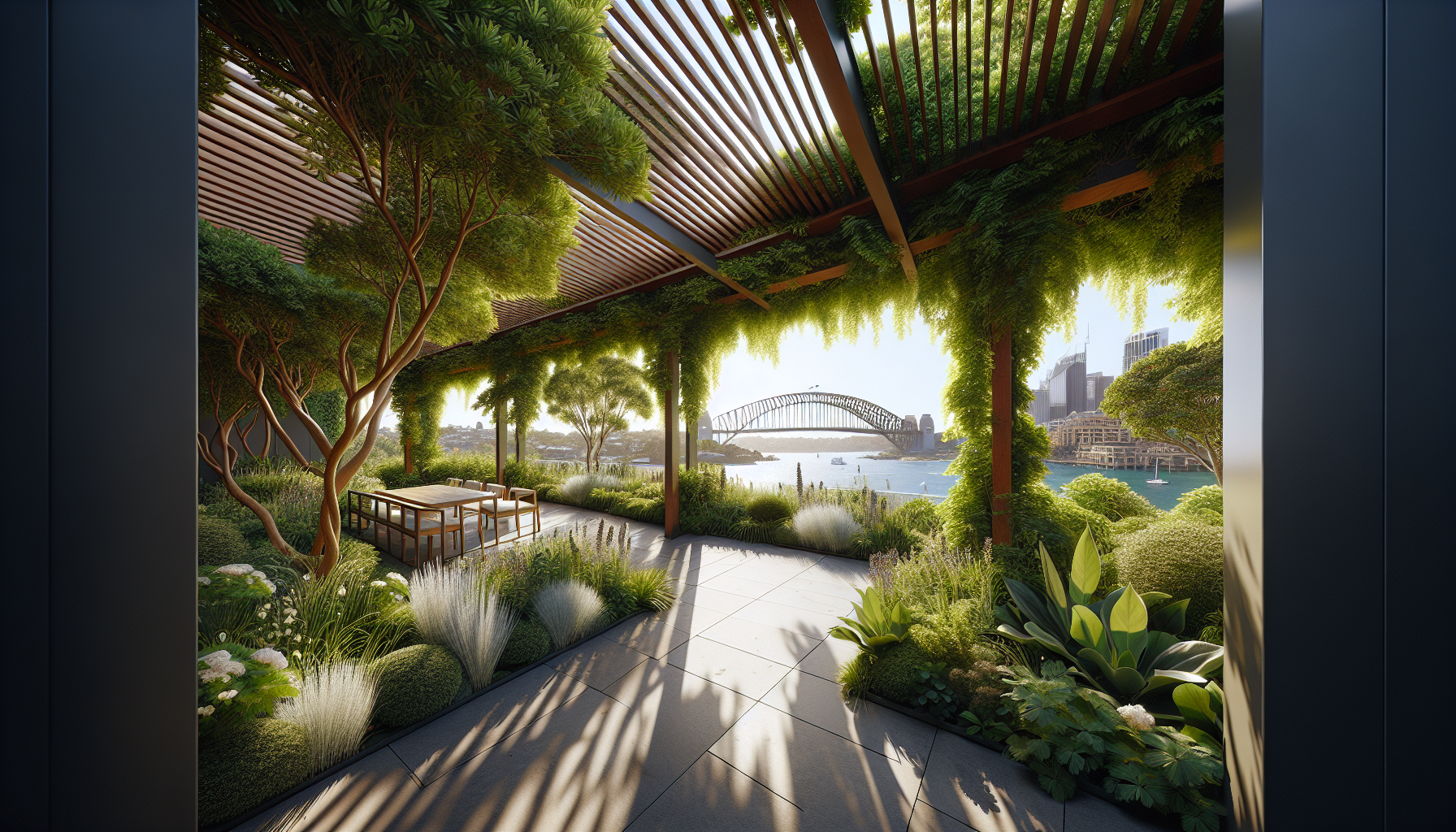What is a Cantilever Carport, and Why Choose One?
A cantilever carport is a modern protective structure designed to shield vehicles from the harsh elements without the need for posts or columns, thereby providing unobstructed space for parking. This type of carport is characterized by a robust overhead canopy that extends over the parking space, anchored on one side to a strong, stationary structure. The ingenious design involves a cantilevered beam that supports the canopy, creating a visually striking and practical construction.
The absence of posts ensures a cleaner look and more efficient utilization of space, a key reason many homeowners prefer this design over traditional carports. The enhancement of curb appeal and the functional aspect make a cantilever carport an attractive addition to any property. The cantilever carport is an ideal solution for areas with limited space or where the presence of posts could obstruct movement.
Why Choose a Cantilever Carport? The benefits of opting for a cantilever design are numerous. Firstly, the open-sided structure facilitates easier vehicle maneuvering, reducing the risk of accidental damage that can occur with restricted or confined entry common in other carport designs. Additionally, this design provides versatile usage: not only as a carport but also as a comfortable outdoor space for social gatherings, devoid of obstructive supports.
Furthermore, cantilever carports are engineered to be durable and long-lasting. Made from high-quality materials like steel or aluminum, they are resistant to rust, decay, and the corrosive effects of weather, which translates to fewer maintenance needs and greater longevity. With the added strength of their design, cantilever carports can also offer better protection against extreme conditions such as heavy snowfall or high winds, safeguarding your vehicle throughout the year.
Top Cantilever Carport Designs to Complement Your Home
Cantilever carports are the perfect solution for homeowners looking to add functional yet stylish shelter for their vehicles without compromising the aesthetics of their homes. These carports are supported by beams or columns on only one side, creating a clear, unobscured space beneath. There are several designs that not only provide ample protection for your cars but also enhance the overall look of your property.
Modern Minimalist Cantilever Carports
For those who appreciate modern architecture’s sleek lines and clean look, minimalist cantilever carports are an ideal choice. These structures typically feature a single, sturdy support, often made of steel, which is powder-coated for durability and offers a range of color options to match your home. The roofing is often a clear, polycarbonate material or a solid panel that provides UV protection while maintaining a light, airy feel. Minimalist cantilever carports blend seamlessly with contemporary homes and can be customized in size to cater to your space requirements.
Traditional Wooden Cantilever Carports
Not to be overshadowed, traditional wooden cantilever carports bring a classic and warm appeal to any home. Wood, as the primary material, enables a natural look that can be further tailored with stains and finishes to match your home’s design. The cantilevered beam, typically a solid wooden beam, supports a pitched roof that can either be open or covered with roofing materials like shingles or metal sheeting to mimic the style of your home’s roof. These wooden designs can incorporate elements like trellises or latticework, adding beauty and functionality as they support climbing plants for a more integrated natural aesthetic.
Solar Panel-Topped Cantilever Carports
Eco-conscious homeowners may opt for cantilever carports topped with solar panels, combining form with function. Here, the cantilever design serves a dual purpose: it shelters vehicles while the solar panels generate clean energy for the home. These innovative designs can either have panels that neatly align with the edge of the carport for a streamlined appearance or extend beyond, providing additional space for energy generation. Solar panel-topped cantilever carports represent the pinnacle of modern design, demonstrating a commitment to sustainability without sacrificing style.
Please remember that all these cantilever carport designs can be further tailored to include features like integrated lighting, hidden guttering systems, and custom color matching. The key is to choose a design that not only provides the needed car protection but also complements and enhances the visual appeal of your home.
Step-by-Step Guide to Installing Your Cantilever Carport
Installing a cantilever carport can significantly enhance the functionality and value of your property. This type of carport is popular for its minimalistic design and efficient use of space. To ensure a smooth installation process, following a detailed guide is crucial. Whether you’re a DIY enthusiast or hiring professionals, understanding each step helps you effectively plan and execute the installation of your cantilever carport.
Preparation and Safety
Before delving into the actual construction, it is important to prepare the installation site by clearing any debris or obstructions. Ensure the ground is level to provide a stable base for your cantilever carport. Moreover, review local zoning laws and building permits as they may vary by region and are vital for legal compliance. Always prioritize safety by wearing protective gear and using appropriate tools throughout installation.
Setting Up the Foundation
The foundation is a critical element of your cantilever carport’s stability. Begin by marking the area where the carport will be erected and dig post holes according to the specifications provided in your kit or plans. Once the holes are dug, set the vertical support posts in place. If your carport design calls for it, this might involve pouring concrete to secure the posts firmly into the ground. Allow the concrete to cure as recommended before proceeding to the next steps to ensure a robust foundation supporting the carport’s weight.
Assembling the Frame and Roof
With the foundation set, the next step involves assembling the frame that makes up the cantilever structure. This typically includes attaching horizontal beams to the vertical posts. It’s essential to ensure that all connections are tight and secure. Once the frame is constructed, you can begin installing the roof panels. Starting from one side, carefully align each panel before securing it. Having an extra set of hands is very beneficial to manage the large panels during this stage. Check that all fasteners are tightly secured to prevent any movement that could weaken the carport’s structural integrity over time.
Following these fundamental steps will take you closer to having a durable and long-lasting cantilever carport to protect your vehicle from the elements. Remember to consult your installation guide regularly and follow all instructions for the best results.
Maintaining Your Cantilever Carport for Long-Term Durability
Regular Inspection is Key
Ensuring the durability of your cantilever carport begins with routine inspections. At least twice a year, take time to closely examine the structure for any signs of wear or damage. Pay special attention to the support arms and the canopy. Look for cracks, rust, or any other deterioration that could compromise the carport’s integrity. By catching and addressing small issues early, you’ll prevent them from escalating into costly repairs.
Cleaning is Crucial
A fundamental aspect of maintenance is cleanliness. A buildup of debris and dirt can lead to premature wear on your carport’s surfaces. Regular cleaning with a mild soap and water solution can keep your cantilever carport looking new and prevent the accumulation of substances that could cause damage over time. Also, ensure that the draining system is clear of leaves and debris to prevent water accumulation, which could lead to rust and structural damage.
Protective Treatments
Apply protective coatings and treatments to further enhance the longevity of your cantilever carport. These can help prevent rust on metal components or rot and termite infestation in wood structures. Sealants and anti-corrosive paints add a layer of defense against the elements, especially in harsh weather conditions. It’s recommended to consult with a maintenance specialist to determine the best protective treatment for your particular carport material and climate.
Comparing Cantilever Carport Materials: Which is Best for Your Climate?
When selecting a cantilever carport, it is crucial to choose the appropriate material that aligns with your local climate to ensure its longevity and functionality. Climate factors such as snow load, wind speed, and exposure to UV rays greatly influence which material is optimal for your cantilever carport.
Durability in Extreme Conditions
Aluminum is a widely preferred material for cantilever carports, particularly for its rust resistance and lightweight characteristics. It performs exceptionally well in coastal areas with prevalent salt spray and high humidity. On the flip side, in areas with heavy snowfall, the structural integrity of aluminum must be considered closely, as heavy loads could potentially deform the lighter construction. Steel, in comparison, is much stronger and better suited for environments with heavy snow or high winds. However, steel can be vulnerable to rust without proper treatment, making it less ideal for regions with excessive moisture or salt exposure.
Heat and Sun Effects
For hot climates with strong sun exposure, reflecting UV rays becomes a top priority. Polycarbonate roofing materials have emerged as a top contender thanks to their ability to provide ample protection from UV radiation without compromising natural light. Additionally, they can withstand varied temperatures, from intense heat waves to cold, without cracking or warping. Whereas, materials like vinyl or certain plastics, though UV-resistant, may degrade over time or become brittle when frequently subjected to extreme temperature fluctuations.
Maintenance and Longevity
Maintenance requirements significantly impact the long-term satisfaction with a cantileverage carport. Wood, for example, can be aesthetically pleasing and robust but demands regular maintenance, especially in damp climates or regions susceptible to termites. Wood can deteriorate quickly if not properly treated and maintained, leading to additional expenses and effort. Conversely, materials such as galvanized steel and aluminum are low-maintenance options more resistant to pests and decay, offering a hassle-free solution over the years.
There’s no one-size-fitness answer in the debate about the best material for cantilever carports. Each material presents a set of advantages and drawbacks that must be weighed in the context of your specific climate and personal preferences. Ensuring a careful balance between durability, climate resistance, and maintenance needs is key to choosing a cantilever carport that will serve you effectively for years to come.




